How to finish an EP in 30 days: week 2 - generating ideas
In the next instalment of our 30-day EP bootcamp we cover creating loops, patterns and ideas for your three tracks


Our guide to writing, finishing and releasing a three-track EP in 30 days kicked off last week. If you're just getting started, head over to the first instalment to begin there. If not, read on for week two...
Armed with the notes and a ‘shopping list’ of elements we’ll need for our tracks that we produced in week one, it’s time to get creative.
This stage is all about creating rough ideas that we can flesh out into full tracks later on. We won’t hold your hand and try and tell you exactly what, or how to create at this stage.
Ultimately, this is where your own creativity comes in, and precisely what you’re writing and how you’re doing so is going to come down to your own particular style and workflow.
However, below and over the page, we have laid out a few potential approaches that might help to spark a little creativity if needed.
It’s worth noting a few things though. Firstly, that ‘shopping list’: the aim here isn’t to stifle your creativity. You don’t need to monotonously tick off a list of kick drums, basslines, pad sounds, etc. Rather, let it guide your next steps.
If you’ve created a drum groove you’re happy with, check what else your template track requires and try to come up with new elements based on what you’ve already created. Creating more than you need is a good tactic, it’s nice to have options!
Want all the hottest music and gear news, reviews, deals, features and more, direct to your inbox? Sign up here.
Equally, our notes from the previous steps should help keep you on track. It’s all too easy to get distracted by a new idea without finishing the thing you’re working on. If you find yourself inspired by something that doesn’t fit the project as planned, you don’t have to abandon it completely, but maybe file it away for later use.
One final consideration – what form should you capture these ideas in? For the most part that’s up to you. What we’re looking for is to create a bank of largely ready-to-go track elements we can lay out into an arrangement in the next step.
The simplest way to capture these might be as audio, but obviously this introduces limitations on how much you can change later on (although that might be a good thing).
Alternatively, you could create MIDI files and saved instrument presets, or even save patterns directly into a hardware sequencer, synth/sampler or modular system. However you feel most comfortable working is the right way to go.
Days 8 to 14
Aims:
- Generate some initial ideas
- Experiment with new techniques
- Produce material to arrange and structure next week
Three approaches for generating ideas
1. Jam and comp

Comping tools are now pretty ubiquitous across the board, existing for a long time in the likes of Logic or Cubase and more, recently added to the more ‘electronic’ DAWs Ableton Live and Bitwig Studio. Comp tools are often thought of as best used for vocal takes, but they’re also fantastic for capturing and amalgamating elements of a synth, guitar, keyboard or even drum machine jam.
Pick an instrument and improvise for a while. Play to your strengths – if you’re not a keys player, use a sequencer and get hands-on with filters and effects, introduce some randomisation. Most comp tools let the user fold longer takes down into layered loops. You can then use these to pick the best parts of your jam session, mashing up riffs, patterns or tonalities into a single loop.
2. Resample 'mining'
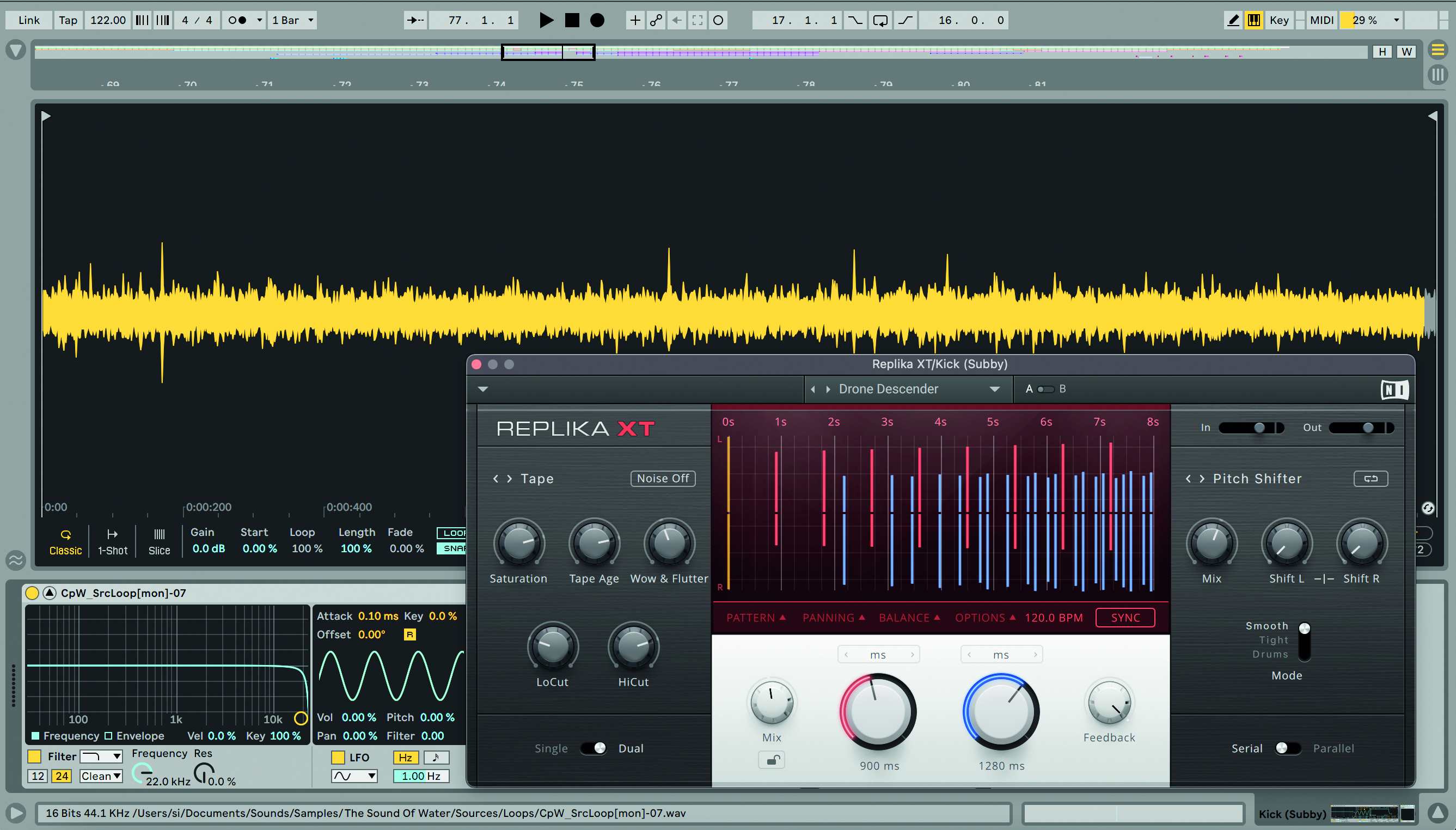
An often fruitful way to get the creative synapses firing is to take a single sound and see how many different track elements you can create from it. A sampled loop – either rhythmic or melodic – is always a good place to start.
Try feeding your loop through creative effects such as extreme reverbs, comb filters, delays and the like, and resampling the results. Or attempt to pick percussive elements from a melodic loop, or turn a percussive sound into a melody using resonator effects. For a great example of this approach, check out the latest episode of The Breakdown with Ploy, where he uses a sampled loop to create both the hook and atmospheric elements of a track.
3. Raid old projects

Do you, like many of us, have a wealth of half-finished or abandoned projects lying around on your hard drive? These could be the perfect place to start when looking for ideas and elements for your next track. Just because something ended up as a creative dead-end previously, doesn’t mean you won’t find new inspiration when revisiting it.
It’s common to find that a bit of time and distance can help you look at old ideas from a fresh perspective. Even if you don’t find something ready to reuse wholesale, try sampling your old ideas. Export abandoned loops, melodies or whole tracks and treat them as if you were sampling any other record, slicing out your favourite elements and applying creative effects.
6 quick composition tips
1. Double and add

Find yourself constantly creating short and simple loops? Try this. Start by creating a one-bar pattern. Now double it and add a new event or variation that only occurs every two bars. Double it again and add something that only happens once every four bars. Keep going until you have something 32 or 64 bars long. This is a quick way to add variety to drum grooves or create repeating motifs that can still hold a listener’s attention.
2. Call and response

Call-and-response is a technique used in various musical traditions, and can work wonders in electronic music too. It’s incredibly simple: create two elements, where the second seems to ‘respond’ to the first.
Think of the bassline/piano in Queen’s Under Pressure. Try creating a melodic riff that mimics the pattern of a rhythmic element, or introduce a chord ‘stab’ that lands as a response to your bassline.
3. Spice up a chord pattern
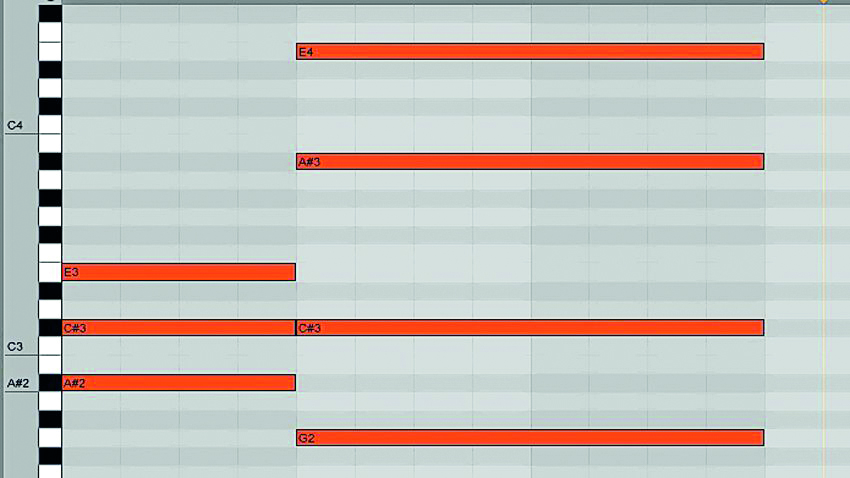
Looking for easy ways to add depth to a pattern of simple triad (three-note) chords? Add notes above the triad, skipping every other note in the scale, to create seventh, ninth or eleventh chords.
Rearrange the notes in your chord, moving some below the root note to create inversions. Give suspended chords a go, too. These involve taking the middle note of the triad and moving it up or down by one scale note.
4. Combining arpeggios
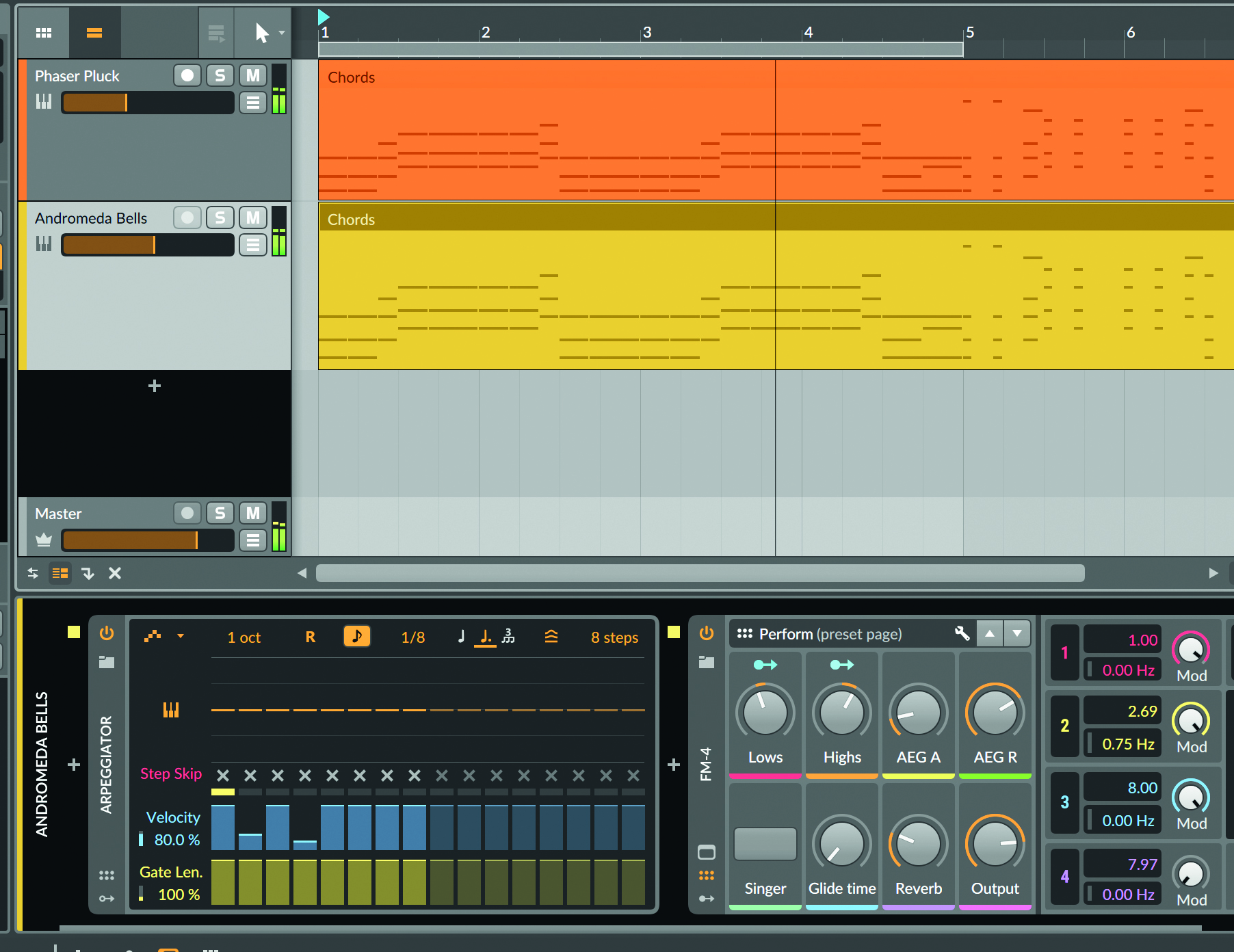
Everyone loves an arpeggio! Arp lines are a great tool since they can add melodic interest and rhythmic drive. For something more complex, try layering arpeggiator patterns using multiple instruments. Start by creating a simple chord pattern, fed into an arpeggiator and synth.
Now duplicate this whole setup. Change the synth sound on this second arp for tonal differences, but also try adjusting arp settings, such as timing, octave range or pitch offset. Automate these parameters as your track progresses to change the interaction between the patterns.
5. Creative delays
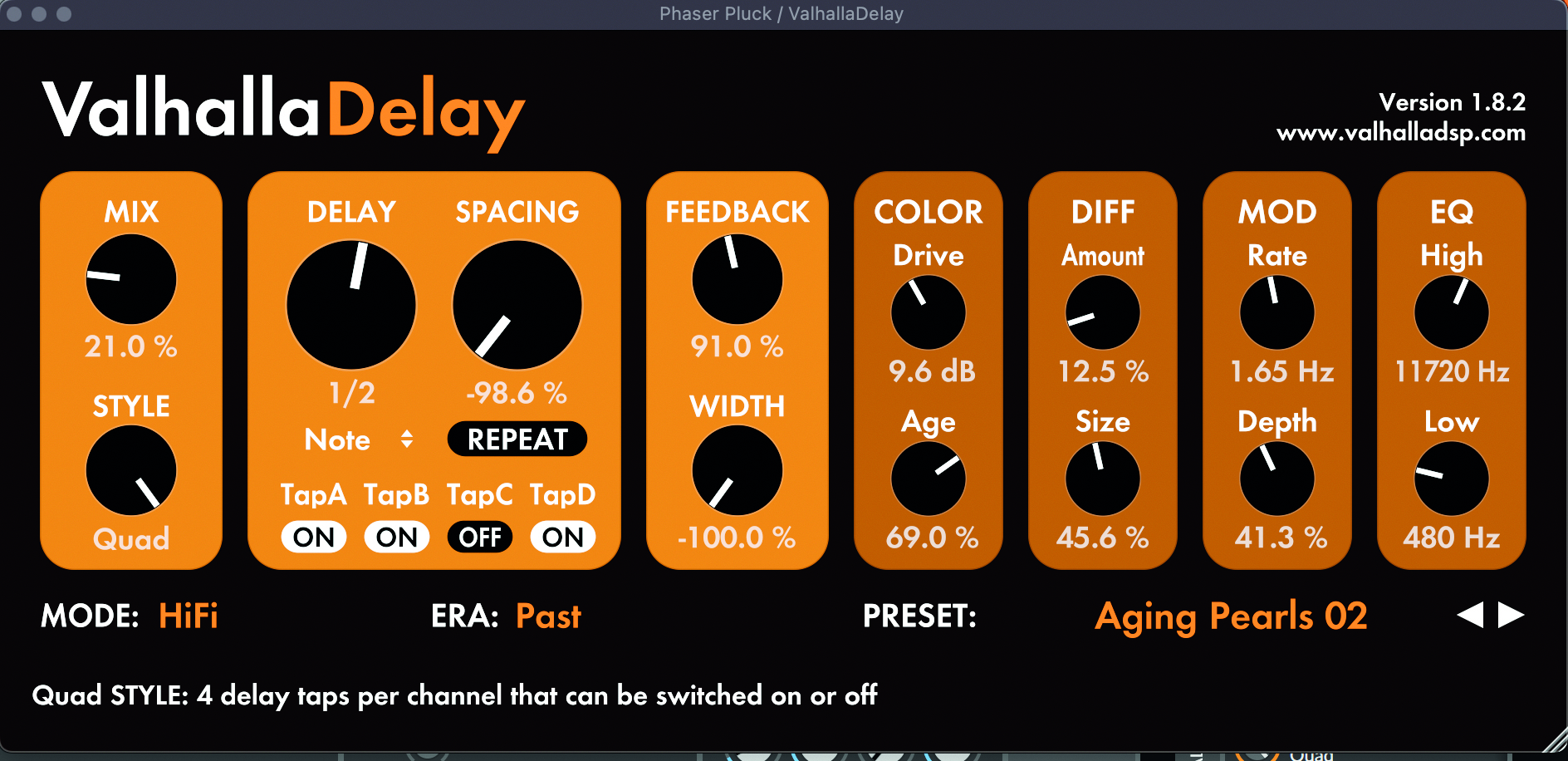
Never underestimate the potential of using a delay effect as a compositional tool. With wet/dry set to 50%+, a delay will radically alter the rhythm and feel of even a simple one-note pattern.
Try feeding simple patterns or rhythms into your favourite delays, and then bounce down the wet signal as a new groove. Similarly, use pitch-shifting delay effects, which can help you generate melodic patterns that break from obvious chord structures.
6. On the one
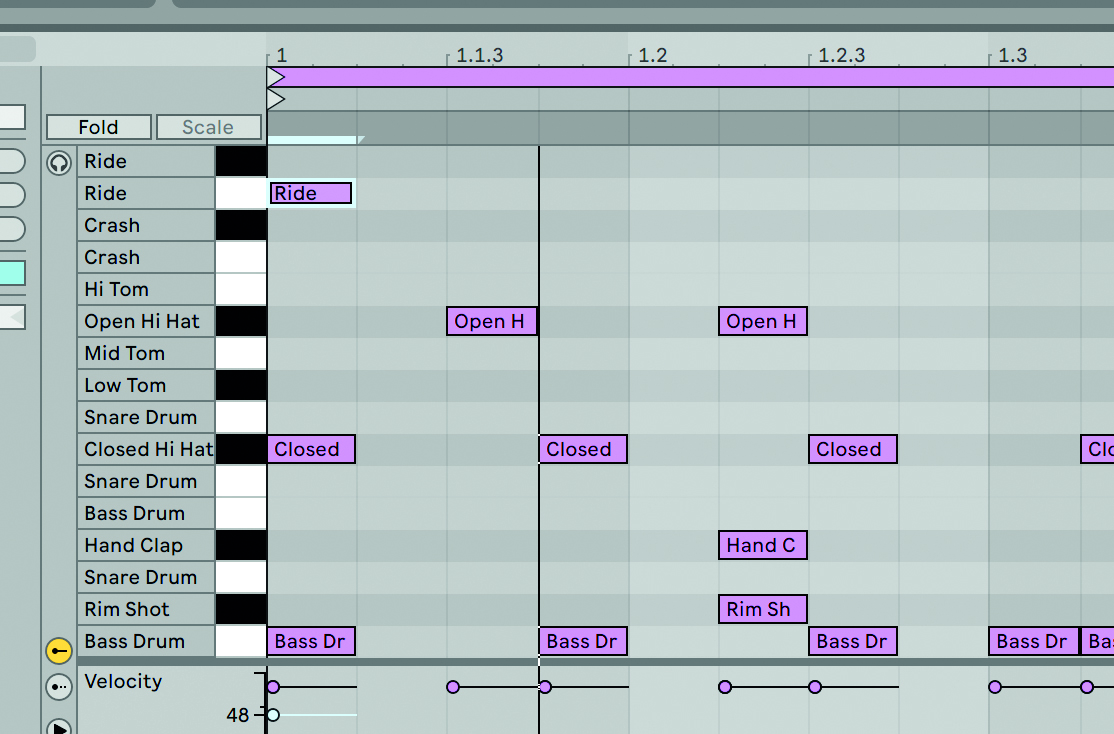
Do you find your looping patterns lack a slight sense of purpose? Try adding a little one-off something to the first beat of each phrase. This could be a chord stab, a crash cymbal or some kind of FX hit.
This might sound like a simple and obvious tip, but adding a little something to help define the start of your groove can help to grab the listener for what comes next. Even low in the mix this can help turn a ‘loop’ into a proper section of your track.
Return to MusicRadar on Tuesday 15th March for the next edition of our 30-day EP workshop...


Future Music is the number one magazine for today's producers. Packed with technique and technology we'll help you make great new music. All-access artist interviews, in-depth gear reviews, essential production tutorials and much more. Every marvellous monthly edition features reliable reviews of the latest and greatest hardware and software technology and techniques, unparalleled advice, in-depth interviews, sensational free samples and so much more to improve the experience and outcome of your music-making.
